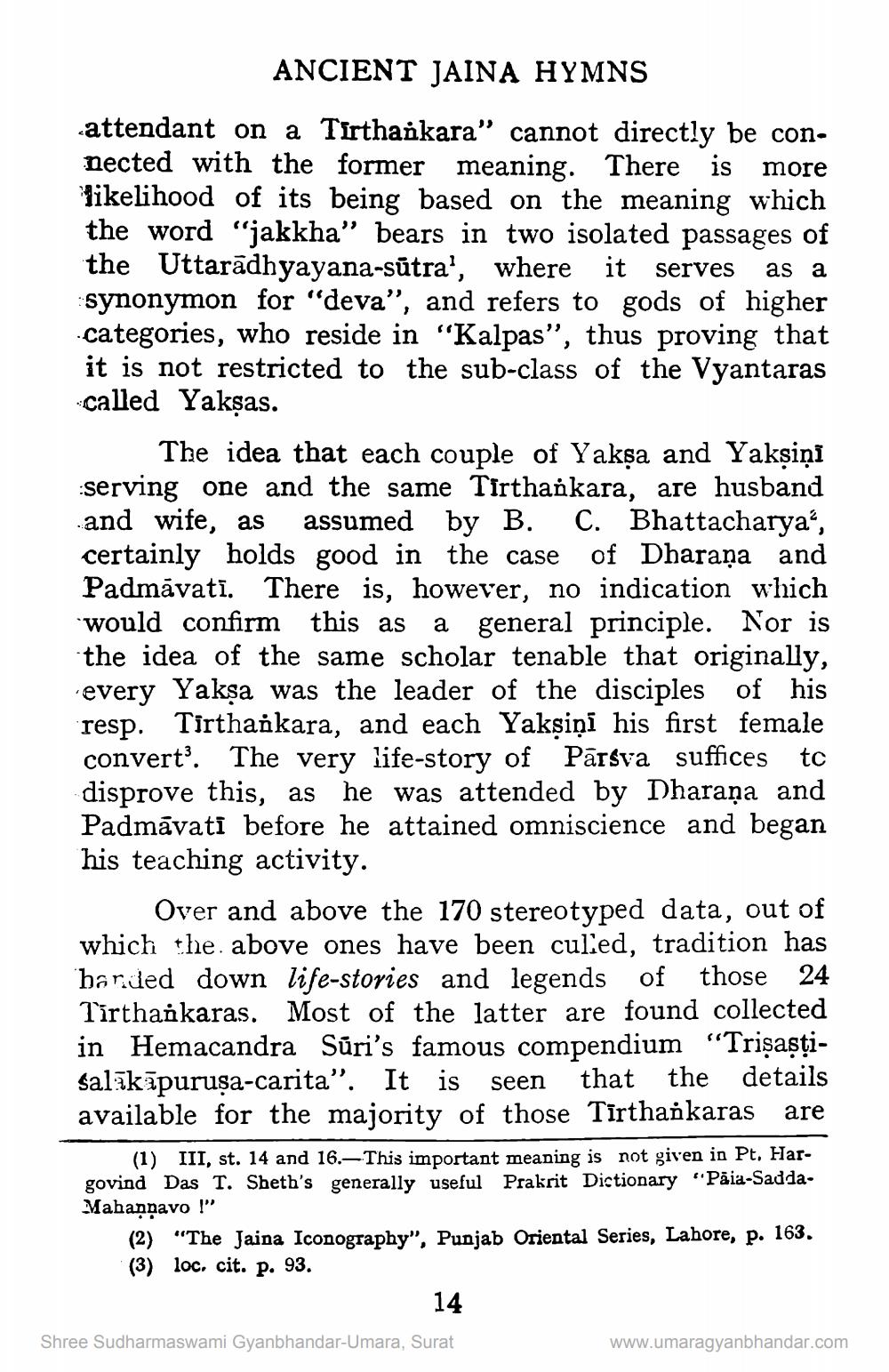________________
ANCIENT JAINA HYMNS
attendant on a Tirthankara" cannot directly be con. nected with the former meaning. There is more likelihood of its being based on the meaning which the word "jakkha" bears in two isolated passages of the Uttarādhyayana-sūtra', where it serves as a synonymon for "deva”, and refers to gods of higher categories, who reside in "Kalpas”, thus proving that it is not restricted to the sub-class of the Vyantaras called Yakşas.
The idea that each couple of Yakşa and Yakşiņi :serving one and the same Tirthankara, are husband and wife, as assumed by B. C. Bhattacharya', certainly holds good in the case of Dharana and Padmăvati. There is, however, no indication which 'would confirm this as a general principle. Nor is the idea of the same scholar tenable that originally, every Yaksa was the leader of the disciples of his resp. Tirthankara, and each Yaksiņi his first female convert. The very life-story of Pārsva suffices to disprove this, as he was attended by Dharana and Padmavati before he attained omniscience and began his teaching activity.
Over and above the 170 stereotyped data, out of which the above ones have been culed, tradition has harüed down life-stories and legends of those 24 Tirthaikaras. Most of the latter are found collected in Hemacandra Sūri's famous compendium "Trişastisalākāpuruşa-carita”. It is seen that the details available for the majority of those Tīrthankaras are
(1) III, st. 14 and 16.-This important meaning is not given in Pt. Hargovind Das T. Sheth's generally useful Prakrit Dictionary "Päia-SaddaMahannavo !”
(2) "The Jaina Iconography", Punjab Oriental Series, Lahore, p. 163. (3) loc. cit. p. 93.
14
Shree Sudharmaswami Gyanbhandar-Umara, Surat
www.umaragyanbhandar.com




